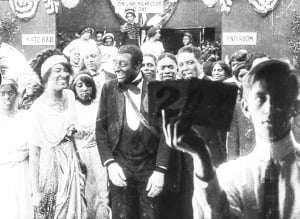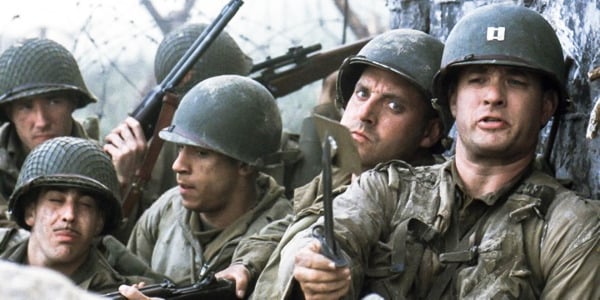Each year, the National Film Registry, a program of the Library of Congress, selects 25 new films to preserve in its archives. The inductees are chosen for their historical, creative and cinematic value, and these span decades, genres and styles. The inaugural class of Registry inductees in 1989 included such stalwarts as “Casablanca,” “Citizen Kane” and “Gone With the Wind.” The National Film Registry’s 25th crop of inductees includes “The Big Lebowski,” “Rosemary’s Baby” and “Willy Wonka & the Chocolate Factory.” The Daily revisited five of this year’s selections, from more well-known selections to more obscure titles — an animated film, a documentary, and a relic from 1913.

“Luxo, Jr.” (1986)
So much of Pixar’s history can be found in this two-minute animated short from 1986, the brainchild of current chief creative officer John Lasseter. We’re introduced to the perky lamp (Luxo, Jr) that stamps out the letter “I” in Pixar’s logo at the beginning of every Pixar Studios production. We also get a first glimpse of the Luxo Ball, the blue and yellow rubber ball with a prominent red star that’s made cameo appearances in “Toy Story,” “Up” and “WALL-E.”
“Luxo, Jr.” received an Academy Award for Best Animated Short Film. The film was technologically revolutionary — the first CGI production to receive an Oscar — but was also novel for its non-human characters. Lasseter, studying the proportions of a human baby, noted its comical top-heaviness and applied these observations to a miniaturization of his desk lamp. The result is a carefully nuanced study in body language — even of the non-living variety — and humor.
“Into the Arms of Strangers: Stories of the Kindertransport”

In 1938, on the eve of the war, British leaders agreed to transport over 10,000 Jewish children from Germany, Austria, Poland and Czechoslovakia to Britain. They were placed with foster families, in hostels or on farms — scattered to the four winds.
“Into the Arms of Strangers” documents this mass movement of innocents to England. Narrated by Judi Dench, the film is a patchwork of grainy footage from the time and interviews with the surviving children of the transports. In the midst of a world war, the heroics of the few were often overlooked, only to resurface after the dust had cleared. “Schindler’s List” was one such recovery; “Into the Arms of Strangers” is another.
The survivors’ accounts of events are particularly striking. Now men and women in their sixties and seventies, the children of the kindertransport recall with the brutal frankness of childhood the separation from their parents and subsequent placement with foster families. Most were never reunited with their families. Many were the sole surviving members of their families, who were killed in Nazi death camps in the east. The children of the kindertransport are in a rare position — just old enough to register the chaos of pre-World War II Europe and reflect upon their experiences far into adulthood.
“Lime Kiln Field Day” (1913)

The oldest film inducted this year, “Lime Kiln Field Day” was the first film in American history to feature African-American actors. The lead, Bert Williams, donned blackface in keeping with contemporary custom.
Unlike other films of that era, which frequently featured African-Americans in less than savory roles, “Lime Kiln Field Day” was a benign, comedic snapshot of a black community at play. The revelers compete in a watermelon-eating contest, wrestle for a greased pig, and run a 100-yard dash. There’s even romance, another rarity for black characters at a time when intimacy between African-Americans was a taboo topic at the movies.
By simply giving due import to the leisure activities of a black community, “Lime Kiln Field Day” was revolutionary for its time. Today, it’s a testament to the power of film to quash stereotypes.
Lime Kiln Field Day is currently under preservation at the Museum of Modern Art.
“Ferris Bueller’s Day Off”

Infinitely quotable and self-aware, John Hughes’s romp through Chicago nonetheless had a good message. Ferris Bueller (Matthew Broderick), as the mouthpiece for ‘80s adolescence, made light of everything — friends, relationships, school — and took us all along for the ride.
The film itself is an ode to youth and Chicago. Ferris feigns illness, dupes his oblivious parents and scores a free day (his ninth, we learn) from school. His friend Cameron (Alan Ruck) is the basket case to Ferris’s free spirit. With Ferris’ girlfriend, Sloane (Mia Sara), they explore the Sears Tower and the Art Institute of Chicago, among other places. They’re all the while pursued by Ferris’ high school principal, who’s got it in for them (mostly Ferris).
The joyride is a tribute to wide-eyed curiosity, pure happiness and friendship. We like to think that there’s a bit of Ferris in us — something unfettered by the norm. We like to think that we’d be able to do the same.
“Saving Private Ryan”

Tom Hanks shows a little ingenuity as he commands his men on D-Day in Steven Spielberg’s World War II drama. Courtesy DreamWorks.
We’ll never forget the uber-realism of that landing on Omaha Beach — red-washed sand, maimed bodies, artillery scattered like matches on the coast. And we’ll never forget the small cast of characters in Captain John Miller’s (Tom Hanks) group of Army Rangers. They’re dispatched to find the last of four sons fighting on the front lines. With three Ryan boys killed in action, the remaining son is the target of a public relations mission from top brass.
Miller and his men are all too aware of this — there’s temporary disgruntlement as the men wonder why one man’s life is worth the effort of six — but Miller pulls them together, finds Ryan, and delivers him safely from the front lines.
We learn that each man in the group represents some facet of the war experience. There’s cowardice, valiance, sorrow and brutality in equal measure. As much as we’d like to identify with one over the others, “Saving Private Ryan” unifies disparate personalities into a single, cohesive whole: a bittersweet, jarring wartime experience. Spielberg’s classic humanizes the war we read about in books and makes history all too real.
Below is the full list of films inducted into the National Film Registry for 2014. All films available at Green Library have been marked with an asterisk (*):
“13 Lakes”
“Bert Williams Lime Kiln Club Field Day”
* “The Big Lebowski”
* “Down Argentine Way”
* “The Dragon Painter”
“Felicia”
* “Ferris Bueller’s Day Off”
* “The Gang’s All Here”
* “House of Wax”
* “Into the Arms of Strangers: Stories of the Kindertransport”
* “Little Big Man”
* “Luxo Jr.”
“Moon Breath Beat”
* “Please Don’t Bury Me Alive!”
“The Power and the Glory”
* “Rio Bravo”
* “Rosemary’s Baby”
* “Ruggles of Red Gap”
* “Saving Private Ryan”
“Shoes”
* “State Fair”
“Unmasked”
“V-E + 1”
“The Way of Peace”
* “Willy Wonka & the Chocolate Factory”
Contact Madelyne Xiao at madelyne ‘at’ stanford.edu.
